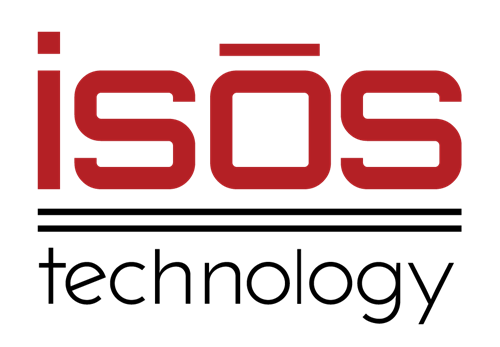 The decision between Jira and Confluence in Fortune 1000 companies plays a key role in shaping project success, with Jira offering a clear advantage in efficiency and collaboration.
The decision between Jira and Confluence in Fortune 1000 companies plays a key role in shaping project success, with Jira offering a clear advantage in efficiency and collaboration.
The advanced features and tailored solutions that Jira provides can revolutionize how large organizations handle complex projects.
By understanding the nuances of each platform and considering the specific needs of your company, you can make an informed decision that sets the stage for improved project execution and overall success.
Key takeaways
- Jira offers advanced project management features tailored for Fortune 1000 companies.
- Customizable workflows in Jira enhance efficiency and adaptability in project management.
- Jira excels in issue tracking, reporting, and integration capabilities crucial for large organizations.
- Confluence lacks robust project management tools compared to Jira for complex projects.
- Choose Jira over Confluence for its comprehensive project management solutions in Fortune 1000 companies.
Jira vs Confluence
Addressing IT challenges in large organizations requires the right tools, and Jira stands out as the top choice for tech-savvy project management leads.
In the fast-paced world of IT, where multiple projects run simultaneously, keeping track of tasks, timelines, and issues is vital. Traditional methods often fall short in managing the complexity of modern IT projects. This is where robust project management tools like Jira shine.
Jira offers a complete platform for project management and issue tracking, streamlining workflows, enhancing collaboration, and ensuring timely delivery of projects. Large organizations require tools that can scale with their needs, adapt to changing requirements, and provide real-time insights to make informed decisions.
Jira's flexibility, customizability, and integration capabilities make it the go-to choice for IT departments looking to optimize their project management processes. By leveraging Jira's advanced features, tech-savvy project managers can effectively navigate the challenges of managing projects in large organizations.
Understanding the landscape of project management tools
Understanding the demands of Fortune 1000 companies—emphasizing collaboration and managing complex, stakeholder-heavy projects—is crucial when evaluating project management tools.
Introducing Jira and Confluence is pivotal – Jira serves as a project management tool, while Confluence focuses on documentation, each playing a unique role within the Atlassian ecosystem.
Understanding these tools' distinct functionalities sets the stage for choosing the best fit for your project management needs.
Overview of project management needs in Fortune 1000 companies
Highlighting the critical role of collaboration and communication in managing complex projects with numerous stakeholders is essential when evaluating the landscape of project management tools in Fortune 1000 companies. These companies require robust project management and issue tracking systems to handle the intricacies of large-scale projects.
Collaboration tools play an important role in ensuring that teams can work together seamlessly, even when geographically dispersed. In Fortune 1000 companies, project management needs are multifaceted, requiring tools that can adapt to the dynamic nature of projects with diverse stakeholders.
Effective communication channels are essential for disseminating information, sharing updates, and aligning team members towards common project goals. Managing projects with numerous stakeholders involves juggling different perspectives, priorities, and timelines, making collaboration and communication tools indispensable.
To meet the demands of Fortune 1000 companies, project management tools must excel in facilitating collaboration, streamlining communication, and providing a centralized platform for project oversight. The ability to manage complex projects with numerous stakeholders efficiently is a key criterion for selecting the right tools in this competitive landscape.
Introduction to Jira and Confluence
In the Atlassian ecosystem, Jira serves as a project management tool, while Confluence functions as a documentation tool. Jira is designed to help teams plan, track, and manage their projects efficiently. It excels in project management and issue tracking, allowing teams to create tasks, assign them to team members, set deadlines, and track progress in real-time.
On the other hand, Confluence is a collaborative platform that enables teams to create, share, and organize documentation in one centralized location. It streamlines the process of creating and managing project documentation, making it easy for team members to access important information whenever they need it.
The relationship between Jira and Confluence within the Atlassian ecosystem is seamless. Teams can integrate these tools to enhance their project management and documentation processes, ensuring that project-related information is always up-to-date and easily accessible for all team members.
Key features of Jira that enhance project management
Jira offers key features that greatly enhance project management. With support for Agile methodologies like Scrum and Kanban, it caters to the needs of large teams, promoting efficient collaboration.
Additionally, its advanced reporting and analytics tools provide valuable insights for tracking performance and ensuring project health. Seamless integrations with various other tools further enhance productivity by streamlining workflows and communication within the project environment.
Agile methodology support
When working with Jira, you can efficiently implement Agile methodologies like Scrum and Kanban, which offer significant benefits for managing projects in large teams.
- Improved collaboration: Agile methodologies foster collaboration, allowing team members to work closely together, share progress transparently, and adapt to changes swiftly.
- Enhanced flexibility: Agile project management in Jira provides the flexibility to adjust priorities, requirements, and tasks based on evolving project needs, ensuring adaptability in dynamic environments.
- Increased productivity: By breaking down work into smaller, manageable tasks and enforcing regular reviews and iterations, Agile methodologies supported by Jira boost productivity and efficiency within large teams.
Implementing Agile methodologies through Jira empowers teams to streamline project management, enhance communication, and achieve better results, making it a valuable tool for Fortune 1000 companies aiming for efficient project delivery amid complexity and scale.
Advanced reporting and analytics
Enhance your project management capabilities with Jira's advanced reporting and analytics features, providing valuable insights into performance tracking and project health through customizable dashboards tailored to meet leadership needs.
Jira stands out from traditional project management tools by offering a unique integration between project management and issue tracking. This integration allows you to not only oversee the overall progress of your projects but also dive deep into the specific issues affecting your team's performance.
Seamless integration with other tools
By seamlessly integrating with various CI/CD tools, cloud storage platforms, and communication apps, Jira greatly enhances productivity and connectivity within project management workflows.
- CI/CD tools: Jira seamlessly integrates with popular CI/CD tools like Jenkins and Bamboo, allowing for automated build and deployment processes directly from within Jira.
- Cloud storage platforms: With integrations with cloud storage services such as Google Drive and Dropbox, Jira guarantees that all project-related documents and files are easily accessible and organized.
- Communication apps: Jira connects effortlessly with communication apps like Slack and Microsoft Teams, enabling real-time collaboration and updates for team members spread across different locations.
This level of integration with CI/CD tools, cloud storage, and communication apps streamlines project management tasks, centralizes information, and fosters better communication among team members.
The benefits of choosing Jira over Confluence for project management
When choosing Jira over Confluence for project management, you benefit from dedicated issue tracking functionality that streamlines bug resolution.
Jira's enhanced collaboration features, like status updates and notifications, foster better team communication.
Custom workflows tailored to your organization's needs in Jira contribute to increased efficiency and clarity in project execution.
Dedicated functionality for issue tracking
Streamlining bug tracking and resolution, Jira offers dedicated functionality for issue tracking that sets it apart from Confluence when it comes to project management.
- Jira provides robust issue tracking capabilities, allowing you to create, assign, prioritize, and track bugs efficiently.
- With Jira, you can streamline bug tracking by setting up custom workflows tailored to your team's needs, ensuring a systematic approach to issue resolution.
- Jira's intuitive interface and powerful reporting tools make it easy to monitor the status of bugs, identify bottlenecks, and expedite their resolution.
Enhanced collaboration features
Jira excels in fostering collaboration through its emphasis on status updates, comments, and notifications, setting it apart from Confluence in enhancing team communication and coordination for effective project management.
With Jira, you can easily keep track of project progress through real-time status updates. These updates allow team members to see the latest developments at a glance, guaranteeing everyone stays on the same page.
Additionally, the ability to leave comments directly on tasks or issues promotes seamless communication within the platform. You can ask questions, provide feedback, or share important information, all in one centralized location.
Additionally, Jira's notification system ensures that team members are promptly alerted to any updates or changes, keeping everyone informed and engaged.
Custom workflows tailored to organizational needs
To further optimize project management efficiency and clarity, consider the advantages of implementing custom workflows tailored to your organizational needs with Jira.
Custom workflows tailored to organizational needs allow for a more streamlined and efficient project management process. Here's how they contribute to efficiency and clarity:
- Enhanced process alignment: By aligning workflows with your team's specific requirements, tasks can flow seamlessly from one stage to the next, reducing bottlenecks and confusion.
- Improved visibility and accountability: Custom workflows provide clear visibility into each task's progress, making it easier to track responsibilities and guarantee timely completion.
- Increased adaptability: Tailoring workflows to fit your organization's unique dynamics enables quick adjustments as project requirements evolve, fostering agility and responsiveness.
Best practices for implementing Jira in your organization
To successfully implement Jira in your organization, start by prioritizing a robust training program to guarantee team members are onboarded effectively.
Encourage a culture of continuous improvement by establishing feedback loops to refine processes and make the most of Jira's features for evolving project management practices.
Training and onboarding for teams
Consider incorporating a hands-on workshop as part of your implementation plan for introducing Jira to your team. This interactive session can greatly benefit team members who are new to Jira and help them understand its capabilities effectively.
To guarantee a successful training and onboarding process, here are some recommended practices:
- Utilize online tutorials: Online tutorials and resources can offer self-paced learning opportunities for team members to familiarize themselves with Jira's interface and functionalities.
- Establish a training schedule: Create a structured training schedule that accommodates different learning styles and preferences within your team. This can include regular training sessions, Q&A forums, and follow-up assessments.
- Encourage hands-on practice: Encouraging team members to actively use Jira for project management and issue tracking tasks can help solidify their understanding and confidence in utilizing the platform efficiently.
Continuous improvement and feedback loops
Setting up a culture of continuous improvement and feedback loops is essential for refining processes and evolving project management practices when implementing Jira in your organization.
Continuous improvement involves regularly evaluating workflows, identifying areas for enhancement, and implementing changes to drive efficiency.
Utilizing Jira's features, such as customizable workflows, Kanban boards, and real-time collaboration tools, can streamline project management and facilitate feedback mechanisms.
By encouraging team members to provide input, share insights, and suggest improvements through Jira's interactive platform, you can create a culture that values ongoing refinement and growth.
Feedback loops within Jira enable teams to iterate on processes, address bottlenecks promptly, and adapt to changing project requirements swiftly.
Leveraging Jira's capabilities for tracking progress, monitoring performance metrics, and gathering feedback fosters a dynamic environment where project management practices can continuously evolve.
Embrace the power of continuous improvement and feedback loops with Jira to drive success in your organization's projects.
Conclusion
To explore the benefits of Jira over Confluence for project management, investigate its extensive features tailored for large team dynamics. Jira excels in project management and issue tracking, offering Fortune 1000 companies a thorough solution. Its advanced capabilities make it a preferred choice for managing complex projects efficiently. With Jira, you can streamline workflows, assign tasks, track progress, and collaborate seamlessly with your team members.
By using Jira, you empower your team to work cohesively towards project goals, ensuring transparency and accountability at every stage. The platform's customizable dashboards and reporting tools provide real-time insights, enabling informed decision-making. In contrast, while Confluence is great for documentation and knowledge sharing, Jira's focus on project management sets it apart for large-scale operations.
Sign up to receive more great content
Learn more about Atlassian and how Isos can help by signing up to receive our latest blogs, eBooks, whitepapers and more.













